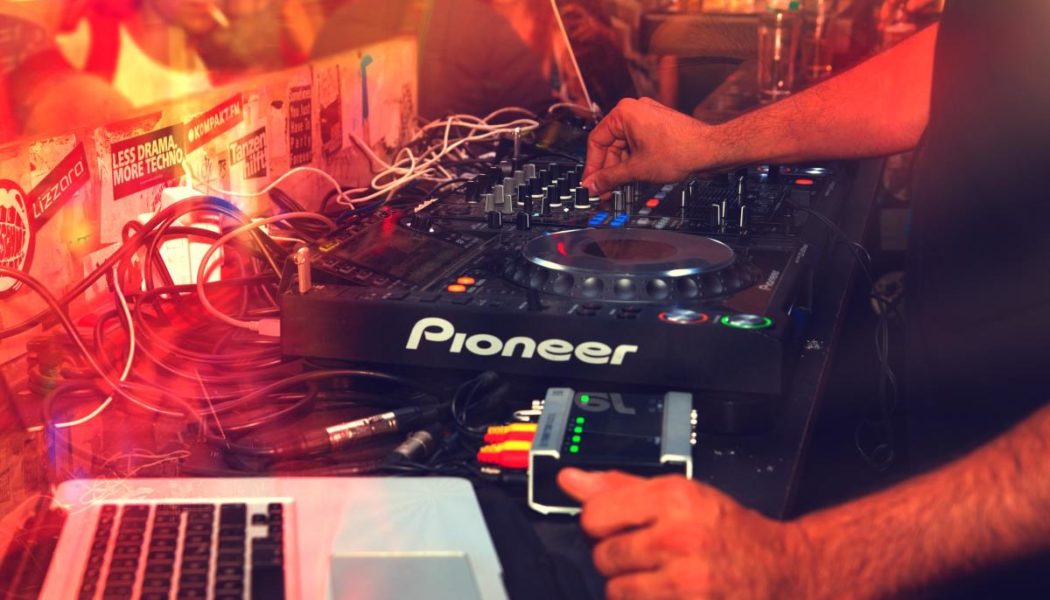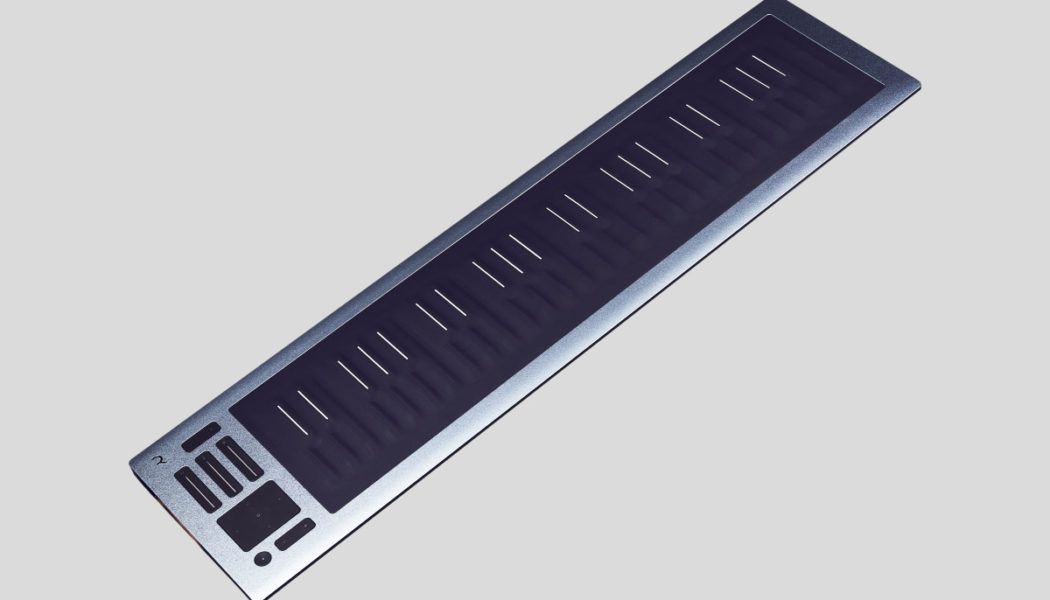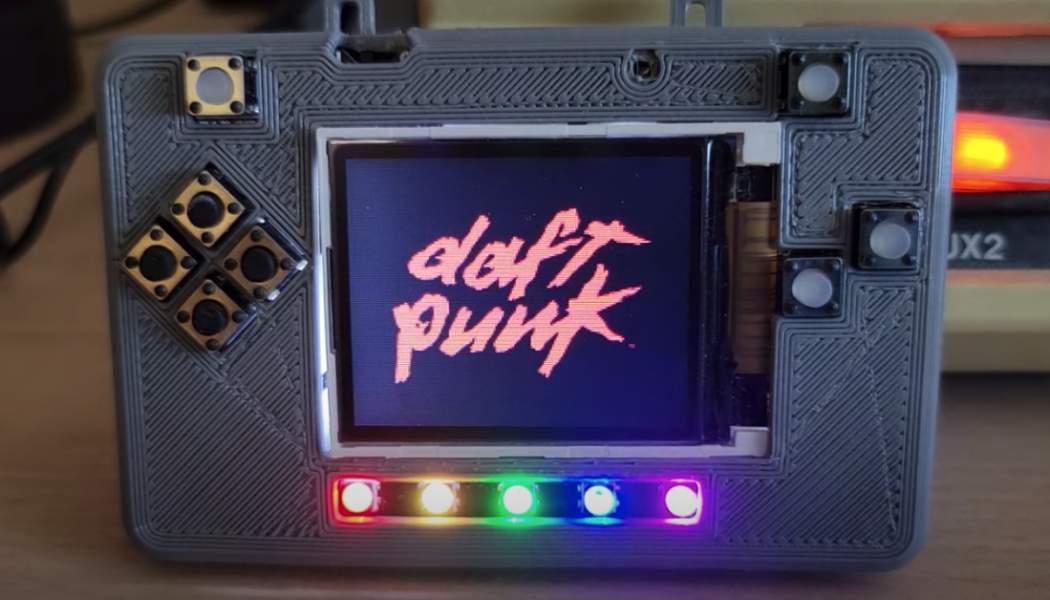GEAR + TECH
Dyson Wades Into Wearable Products With Air-Purifying Headphones
Purified air and pristine sound quality – both are now simultaneously achievable with Dyson‘s latest invention. Headquartered in Singapore, the multi-billion dollar manufacturer of household goods is wading into the audio technology space with a unique twist. Enter the Dyson Zone, the company’s new noise-cancelling, air-purifying headphones. The product marks Dyson’s first wearable device on the market and they’re already making a stand-out impression. Airflow and purification are two of Dyson’s foremost areas of expertise. The company’s existing product offering includes a robust lineup of vacuum cleaners, hair dryers, fans, and more. Scroll to Continue Recommended Articles Dyson applies their industry-leading technology throughout the Zone. ...
New Software Compensates Music Producers When DJs Play Their Songs In Clubs
Unclaimed and unpaid public performance royalties could soon be a demon of the past. DJ and music producer DVS1 recently launched Aslice to help alleviate the issues that come with public performances in clubs and venues around the globe. It operates on a donation-based system, so DJs can pledge a percentage of their gig fee to the songwriters and producers whose music they’re playing. The company recommends 5%, but more can be pledged and the figure won’t be disclosed. Aslice’s beta testing in November 2021 had 100 DJs upload 110 playlists and 5,291 tracks. Of those tracks, 4,339 were accurately identified and matched, a clip of 82%. This equated to 2,213 producers receiving payments averaging $1.40 per song. The money that wasn’t able to be tracked will be do...
New Blockchain-Based Platform, Independent, Lets Fans Invest In Their Favorite Artist’s Music
A new blockchain-based platform wants to empower independent artists—and the fans who support them. Based on the Solana blockchain, Independent is a decentralized marketplace that caters to the interests of independent musicians by letting them share a piece of the pie with their fans. The goal is for artists to release music as NFTs and monetize their creations while empowering their fans. Built on the Solana blockchain, Independent is powered by the creators of Monk Mafia, an NFT marketplace that made international headlines after receiving support from a number of high-profile backers in Asia. Those include Keiji of the chart-topping J-pop band EXILE and the award-winning Netflix documentarian Nirmal Purja. Artists releasing on Independent choose what percentage of t...
ROLI Releases Seaboard RISE 2, a Reimagined MIDI Keyboard for Limitless Artistic Expression
ROLI’s new Seaboard RISE 2 rids any creative limits a typical MIDI keyboard may possess. The Seaboard RISE was first launched by ROLI in 2015 and has received praise from producers, musicians, and composers alike. Its diverse feature set and expansive soundscapes have become paramount to the sounds of TV series like Stranger Things and featured on albums like Drake’s Views and Ed Sheeran’s ÷. The new capabilities in the RISE 2 include a new Keywave2 playing surface, more versatile suite of bundled software, a burnished platinum blue aluminum chassis, and expanded compatibility with other instruments via MIDI port and USB-C. The Equator2 synth, Ableton Live Lite, and ROLI Studio are also included. ROLI’s Seaboard RISE 2. ROLI Scroll to Continue Recomme...
ROLI Releases Seaboard RISE 2, a Reimagined MIDI Keyboard for Limitless Artistic Expression
ROLI’s new Seaboard RISE 2 rids any creative limits a typical MIDI keyboard may possess. The Seaboard RISE was first launched by ROLI in 2015 and has received praise from producers, musicians, and composers alike. Its diverse feature set and expansive soundscapes have become paramount to the sounds of TV series like Stranger Things and featured on albums like Drake’s Views and Ed Sheeran’s ÷. The new capabilities in the RISE 2 include a new Keywave2 playing surface, more versatile suite of bundled software, a burnished platinum blue aluminum chassis, and expanded compatibility with other instruments via MIDI port and USB-C. The Equator2 synth, Ableton Live Lite, and ROLI Studio are also included. ROLI’s Seaboard RISE 2. ROLI Scroll to Continue Recomme...
3LAU, A-Trak, Diplo Bet Big On HIFI as the Future of Financial Transparency for Music Creators
The music industry’s A-listers and executive class are betting on HIFI as the future of financial transparency and empowerment in the creator economy. HIFI, a platform branded as a “financial rights organization,” is committed to delivering a suite of data-driven financial products to creators on a membership basis. Thus far, the company has delivered on the development of a Royalty Dashboard solution that uniquely aggregates royalty earnings data from across platforms and accounts all in one location. Financial empowerment and transparency are two core principles for HIFI as it aims to shed light on an element of the industry that—in some ways—has remained opaque by design. Now, the company, which launched in 2020, has closed an eight-figure funding round to contin...
Yuri Suzuki Creates Functional Online Studio of Classic Roland Synthesizers
Legendary music hardware company Roland is celebrating its 50th anniversary in a big way: by collaborating with renowned electronic musician and experience designer Yuri Suzuki. In honor of Roland’s annual “303 Day,” Suzuki has collaborated with Counterpoint Studio to digitally recreate some of the brand’s most iconic synthesizers. The experience is an ode to Roland’s seminal TB-303 synthesizer, which was first introduced in 1981. Roland and Suzuki have collaborated in the past, like when they joined forces for in 2020 for the web-based music tool “808.303.studio.” They’ve now added the classic SH-101 to the TB-303 and TR-808 interfaces. Yuri Suzuki presents his “Color Chaser 2010” project at the 2010 Lift Conference in...
Programmer Creates One-of-a-Kind Daft Punk “Word Clock”
It’s incredible to think about how one of the most impactful electronic songs in history, “Harder Better Faster Stronger,” only has 18 unique words. It was a discovery made by Daft Punk fan Ben Combee, who says the realization of the song’s catchy simplicity inspired him to create a one-of-a-kind piece built around the legendary robots’ generational dance anthem. Combee created an art display similar to a word clock, a device capable of playing back the song’s audio while lighting up the appropriate lyrics with perfect timing. Combee explained that all the lyrics were able to be fit in a 12×7 combination matrix after duplicate lyrics were excluded. Then, he programmed a series of cue points tagged to specific timestamps in the track s...
Antarctica packing list: all you need for your polar adventure
A click-and-pick Antarctica packing list with links to specific products that have been personally tested by Atlas & Boots A friend of mine recently asked what three things make me happiest, as part of her research for her forthcoming book. I named family and nature which are fairly standard answers. Less common was my third choice of hygge, the Danish concept of cosiness. We hear a lot about wellness, fitness and mental health but very little about nourishing the body on a tactile level. I explained that I love wrapping up in soft fabrics and fleecy blankets and can’t understand why we use these materials to soothe babies and young children but then swap to jeans and stiff, starchy clothes when we’re older. In short: I love being warm and comfy. With this in mind, you can unders...
LimeWire Returns As NFT Marketplace to Right the Wrongs of Its Troubled Past
12 years after closing shop, LimeWire is back to reckon with its controversial past—and pave a new path forward. For the uninitiated, LimeWire was the go-to peer-to-peer file sharing service that dominated the early 2000s. Predating the all-access model of today’s streaming services, the controversial platform was used as a workaround for music fans who didn’t want to purchase individual songs or albums via iTunes and other digital music stores. It was as simple as downloading and playing, though it did put even the most formidable antivirus software products through the wringer. LimeWire’s reign effectively came to an end when successful lawsuits initiated by major record labels and music rights-holders resulted in a staggering $105 million in fines. LimeWire’...





















